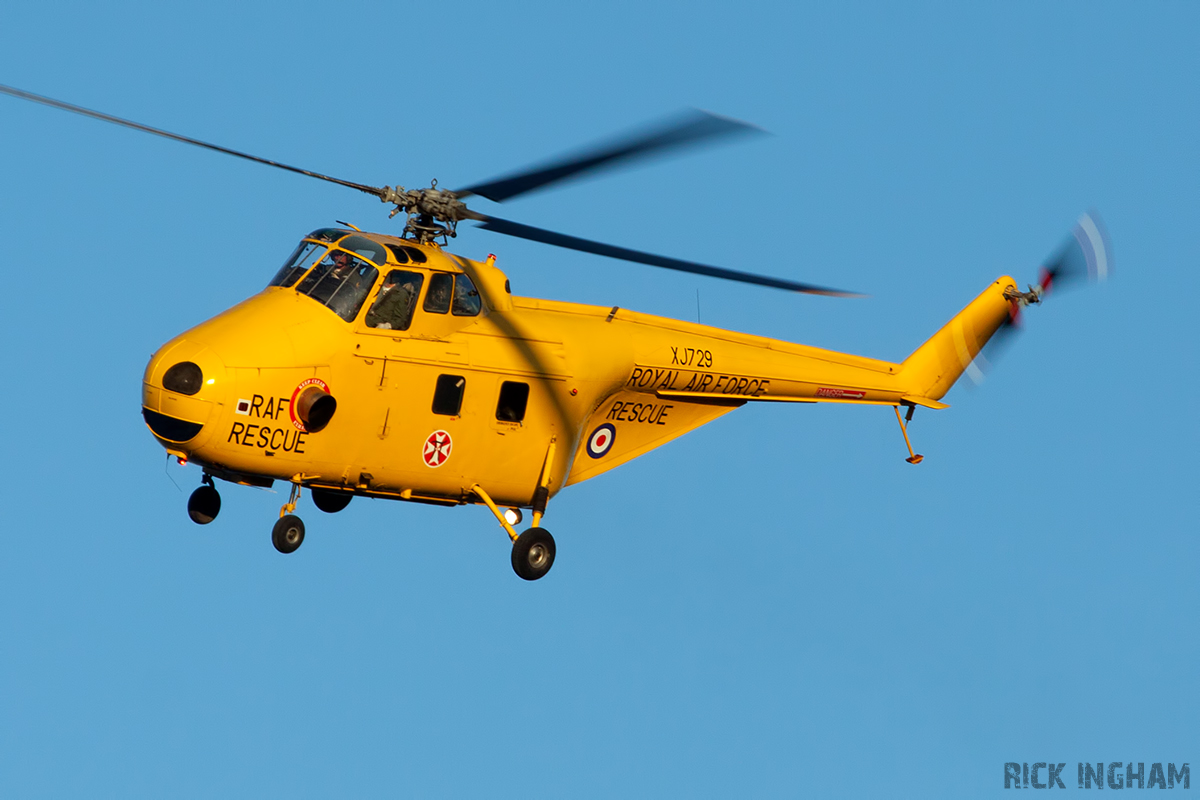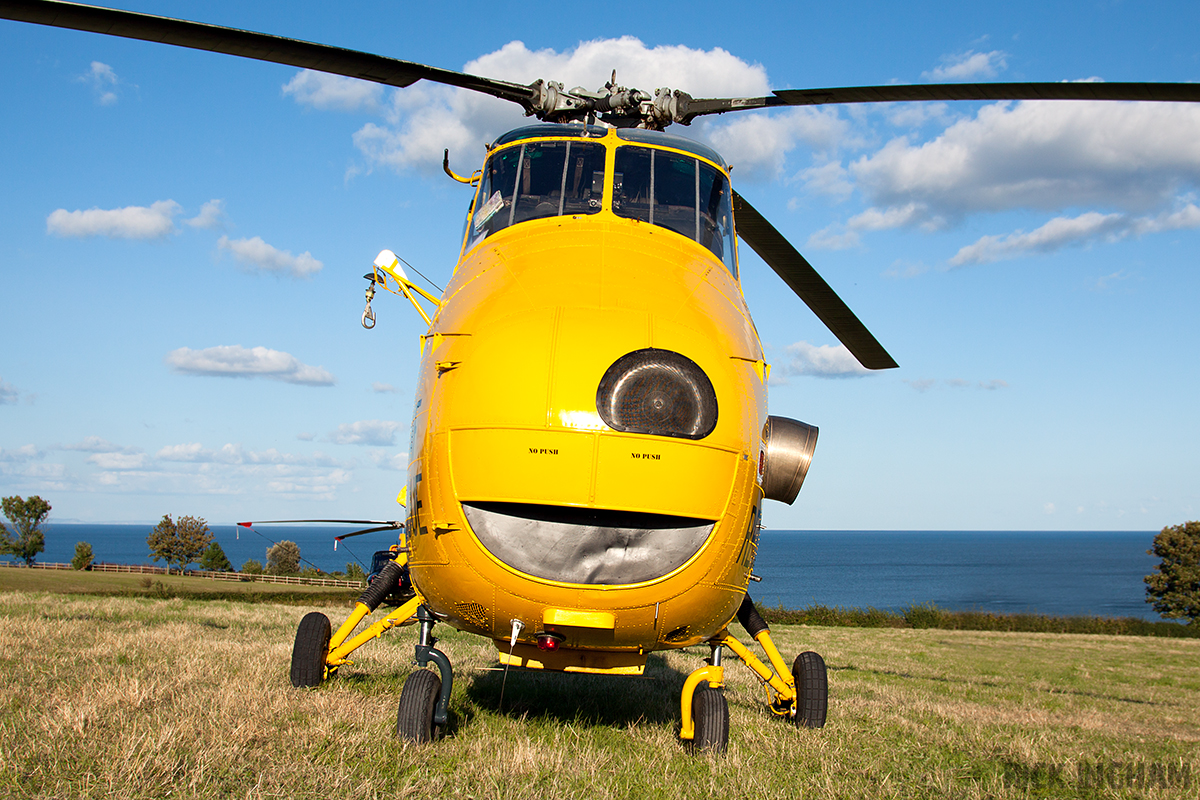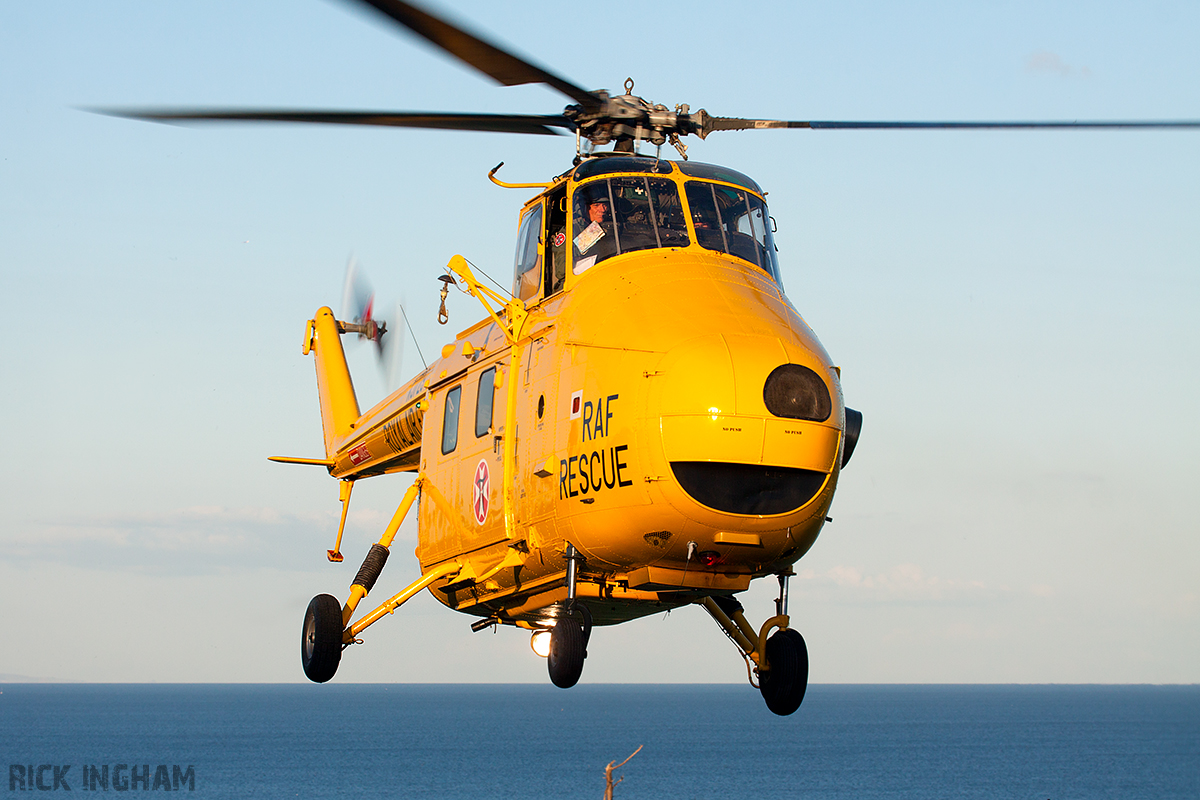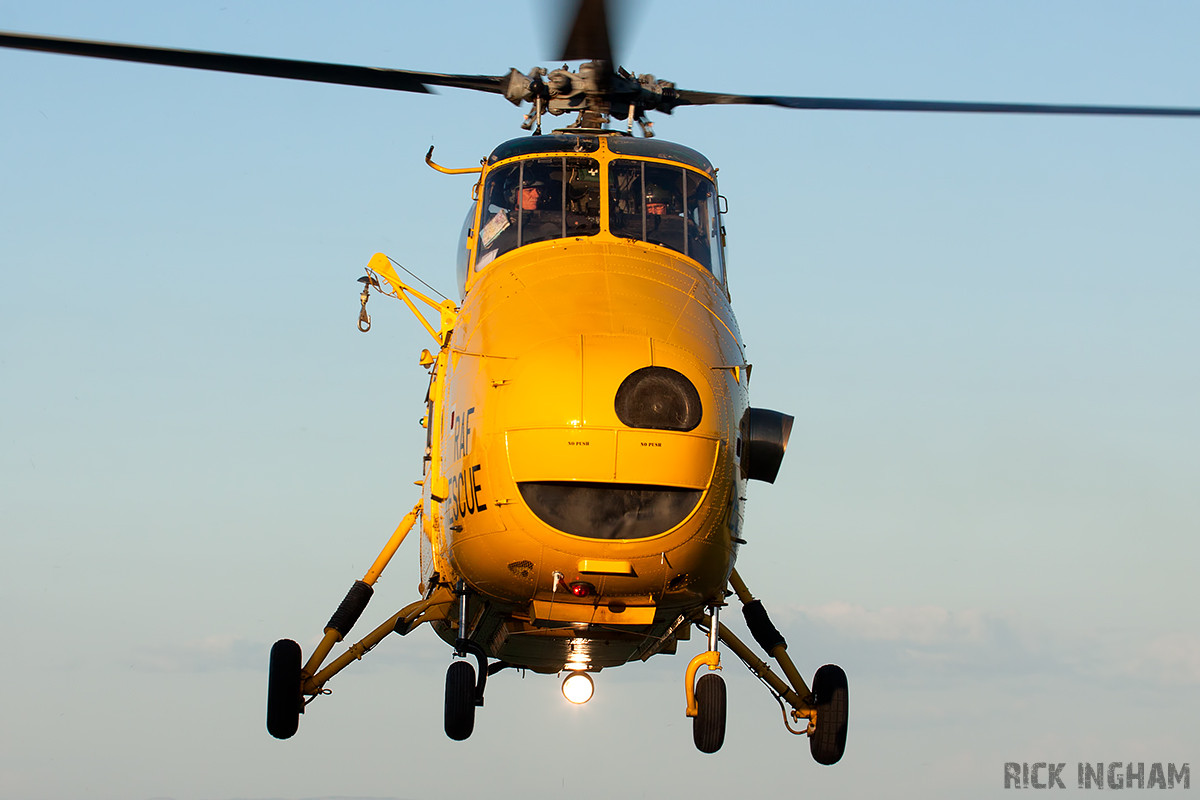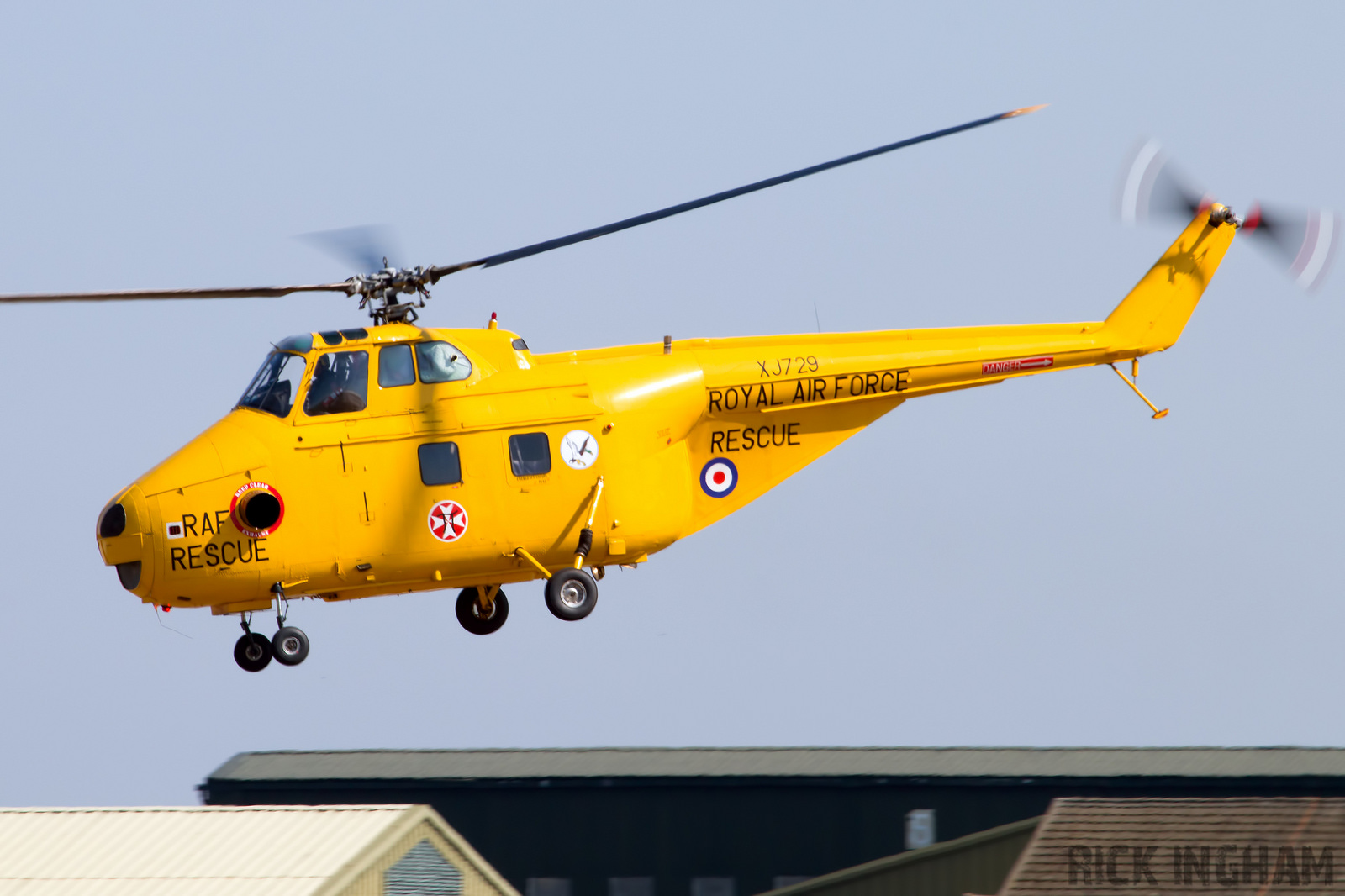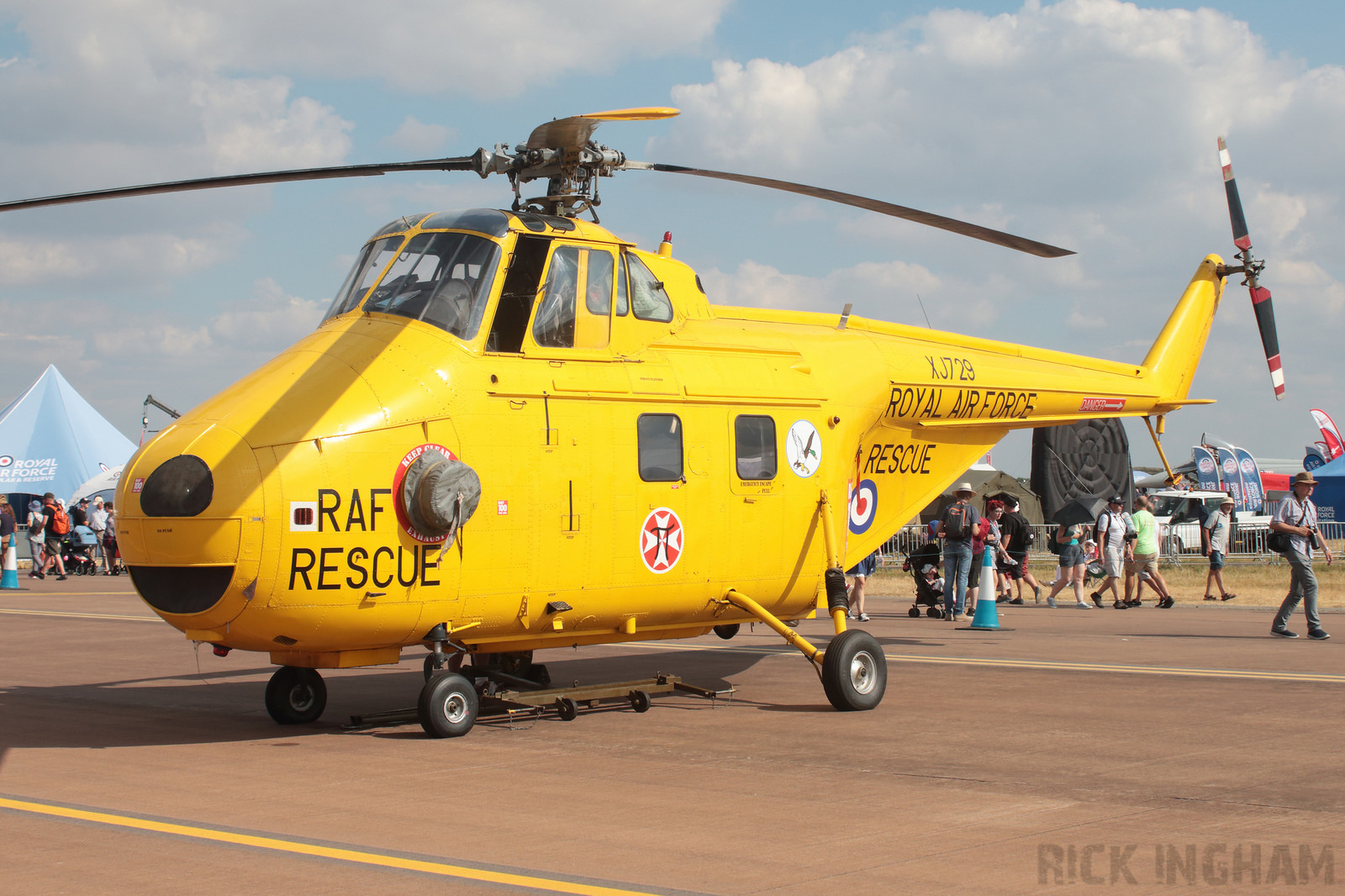Whirlwind’s story began in America when the Sikorsky H-19 Chickasaw made it’s maiden flight on 10th November 1949. The aircraft entered service a year later with the US Army and Air Force which took delivery of more than 1000 airframes and later saw action in Vietnam.
Evolution
During 1950, the Royal Navy received 10 civilian variants known as the Sikorsky S-55 for evaluation and by November of that year Westland Helicopters of Yeovil, Somerset bought the licence to build the aircraft at their factory. The first British built airframe for the Royal Navy, a Whirlwind HAR3, flew on 15th August 1953 and deliveries commenced shortly after to 705NAS at RNAS Portland. The Royal Air Force also ordered 33 Whirlwind HAR2 helicopters for transport and rescue duties which joined the Transport and Coastal Command Units in 1955.
24 Whirlwind HAR4 variants were also built from 1954 which featured a new variant of the Pratt & Whitney R-1340 engine to enable it to work better in hot and high conditions, which resulted in the type deploying to Malaysia.
In 1955, the Whirlwind HAR5 was the first variant to be equipped with the British Alvis Leonides Major engine. A year later the HAR7 was developed as a Royal Marines Commando transport helicopter but was plagued with problems with the clutch mechanism and ultimately lead to the types grounding for several months. Some united re-equipped with the older HAR3 until the problems had been rectified. In the same year, Westland pushed out two Whirlwind HCC8 for VIP duties with the RAF Royal Flight and 19 Whirlwind SRS.2 civil variants.
In February 1959 the first upgraded HAR7 to HAR9 standard for the Royal Navy flew at Yeovil, fitted with a D.H. Gnome 1000 turbine engine. Due to the larger engine, the nose was extended to enable easier access.
The RAF decided to buy 68 new build Whirlwinds to match the standard of the Navy’s HAR9 which was allocated HAR10 for the Rescue variants and HC10 for the transport. Many HAR2 and HAR4’s were also re-engined with the Gnome H 1000 and re-designated HAR10s.
Units
In June 1955 22 Squadron, RAF took delivery of the first four Whirlwinds to replace the Sycamore HC12. 22 Squadron has three flights spread across the UK which consisted of ‘A Flight’ at Thorny Island in Hampshire, ‘B Flight’ at Martlesham Heath in Suffolk and ‘C Flight’ at RAF Valley in North Wales. The squadron went through multiple reorganisations of it’s flights before moving on to the Westland Wessex and then the Westland Sea King.
84 Squadron reformed with Whirlwind HAR10’s on 17th January 1972 but were replaced with Wessex in 1982. Today 84 Squadron operate the Griffin HAR2.
228 squadron was formed on 1st September 1959 at RAF Leconfield from 275 squadron and flew Sycamores until they passed the aircraft to 118 squadron and were re-equipped with Whirlwinds. 228 was renumbered 202 Squadron on 1st September 1964.
202 Squadron reformed on 1st September 1964 from 228 Squadron at Leconfield with Whirlwind HAR10’s with initially three flights; A Flight at Acklington and Boumer, B Flight at Leconfield and C Flight at Coltishall. D and E Flights combined to form D Flight split between Coltishall and Lossiemouth. Sea King HAR3's began replacing the Whirlwind's in July 1978, complimented by Wessex in November 1982 but were withdrawn by August 1983.
G-BVGE
G-BVGE started life as a Westland Whirlwind HAR2 construction number WA100 built at Yeovil and first flew on 18th January 1956 which it was designated the RAF registration of XJ729. It was flown to RAF St Mawgan on 3rd March but later returned for adjustments before being delivered to 22 Squadron at RAF St Mawgan on 9th March 1956.
She later returned back to Westland Helicopters to be upgraded to HAR10 standard and flew again on 22nd February 1962 for test flights. 16th March saw 729 returned to 22 Squadron at St Mawgan.
She then saw service at RAF Leconfield in 1964 until 1971 with 202 Squadron ‘B Flight’, RAF Leuchars with 202 Squadron ‘C Flight’ in 1971, RAF Coltishall in 1972 to 1974 with 202 Squadron ‘C Flight’, RAF Chivenor from 1974 until 1978 with 22 Squadron ‘A Flight’, and then finished her career at SARTU (Search and Rescue Training Unit) RAF Valley.
In 1981 it was withdrawn from use at RAF Valley and was transported by Sea King (Under-slung) to SAREW (Search and Rescue Engineering Wing) at RAF Finningley where it became an instructional airframe registered as 8732M at.
When SAREW closed, 729 was left outside and deteriorated to such an extent that it was put up for disposal. Luckily she was purchased from a scrap yard by a Brian Austen on 18th November 1993. It was rebuilt in a yard in Cricklade, Wiltshire before before moving to his airfield, Oaksey Park near Kemble, Wiltshire and placed on the civil register as G-BVGE. She was noted appearing in the static display of the Royal International Air Tattoo at RAF Fairford in 1995.
On 27th May 1999 Brian Austen sold her to James Kelly based in Mullingar, Ireland where it was flown regularly to various public events until it’s Air Worthiness Certifciate expired with a Date of No Flight issued on 18th August 2007. G-BVGE was saved however on 28th November 2013 by Andrew Whitehouse of Crewkerne, Somerset, when he purchased the aircraft and brought it back to the UK.
XJ729 had her Certificate of Air Worthiness re-issued on 28th November 2013 and has since flown to several public events in 2014 including Weston Super Mare, Waddington and Dawlish. It is hoped to be a regular sight on the display circuit in years to come…


